The Québec maritime Blog
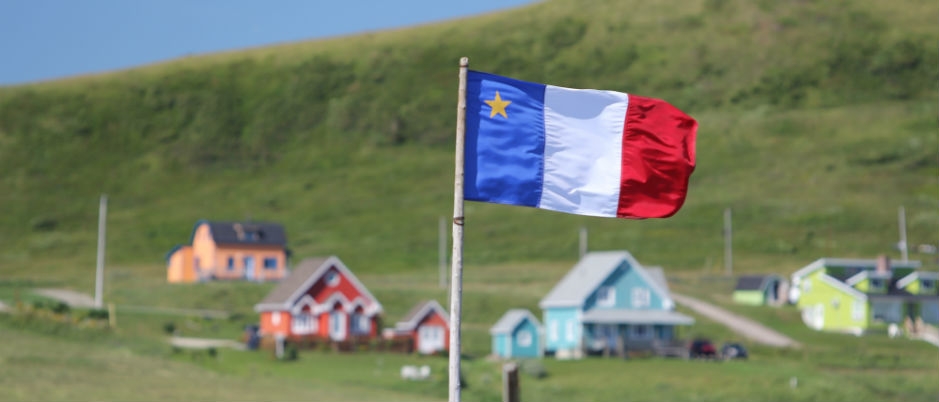
-
Acadian flag in the Îles de la Madeleine
L'île imagin'air/Tourisme Îles de la Madeleine
A Vast Cultural Mosaic
Settlement in the maritime regions of Québec was based on geographic location and coveted natural resources. Over time, people came from just about everywhere to settle on the shores of the Estuary and Gulf of St. Lawrence, hoping for a better future.
Gaspésie
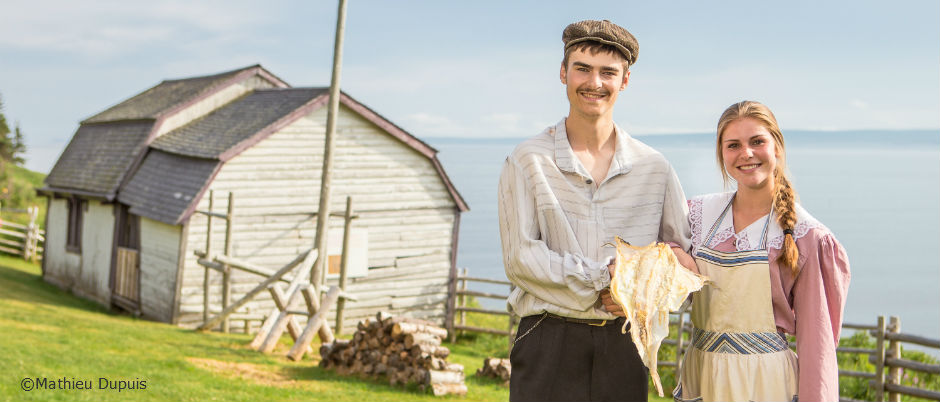
The Mi’gmaq, a nomadic Indigenous people, were the peninsula’s main occupants when first contact with Europeans occurred.
During the French Regime, except for the settlement of a few families, efforts to persuade seasonal fishermen to settle in Gaspésie met with little success.
After the British Conquest, the development of sea and forest resources provided the conditions needed for settlement characterized by ethnic plurality. Quebec’s eastern peninsula became a safe haven for two groups of fugitives: the Acadians in 1760 and, two decades later, American Loyalists. The population grew and became more diverse with later waves of immigration. A wave of British immigrants (English, Scots, Irish and Jersey Islanders) arrived in the Chaleur Bay area and spread all the way to the tip of the Gaspé Peninsula. Starting in the late 18th century, French Canadians from Bas-Saint-Laurent and other regions south of the St. Lawrence came to settle along the north shore of Gaspésie.
All these ethnic groups contributed to the rich cultural mosaic found in Gaspésie. The Acadians and French Canadians added a colourful note to the local dialect, while the British contribution is apparent in local place names (New Carlisle, New Richmond) and cuisine (tea, sea pie, meat pie, stew, rosbif for roast beef, fish & chips, chowder, plum pudding, etc.).
Visit: the “Discover the New World” road trip itinerary, which will introduce you to five people who marked the history of this region, and the Birthplace of Canada historic site in Gaspé
Îles de la Madeleine
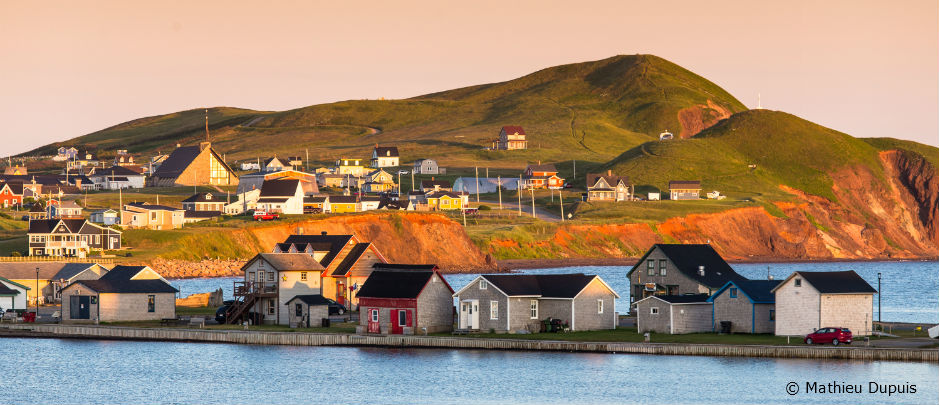
It appears that the Mi’gmaq, lured by the variety and abundance of marine species available in the Îles de la Madeleine, frequented the Islands before the arrival of Europeans.
The sea’s resources drew people to the archipelago. First, the Basques and Bretons carried out seasonal expeditions to hunt seal and walrus (known as sea cows). During the French Regime, cod fishing and seal and walrus hunting were controlled by the seigneurs, for whom colonization was not of great concern.
Only after the British Conquest in 1765 did permanent settlement begin on the islands of Havre Aubert and Havre aux Maisons. The first settlers, who were hired by the merchant Richard Gridley, were exiled Acadians, victims of mass deportation—called Le Grand Dérangement or the Great Upheaval—between 1755 and 1758.
Meanwhile, other Acadian refugees from the islands of Saint-Pierre and Miquelon, who were again forced into exile during the French Revolution, settled in the Îles de la Madeleine in 1793.
Over the years, more settlers of various origins arrived on the Islands, including French, French Canadian and British settlers: Scots, Irish and Jersey Islanders. While the Irish scattered all over the Islands, the other English-speaking settlers concentrated around Grosse Île and Entry Island.
Given the remoteness of the Islands, the Islanders (also known as Madelinots) had to be self-reliant. Over time, they developed a sense of community pride and belonging as well as bonhomie and an exceptional sense of hospitality. Their colourful houses, love of music and song, and lilting dialect, which visitors immediately find so charming, are good illustrations of these traits.
Visit: the La Grave heritage site, the site of the Islands’ first settlement and the beginning of the fishing industry in Havre-Aubert, as well as the Entry Island Museum, the Little Red School House, and the Veterans Museum, all of which illustrate the history and cultural heritage of the archipelago’s English-speaking community
Côte-Nord
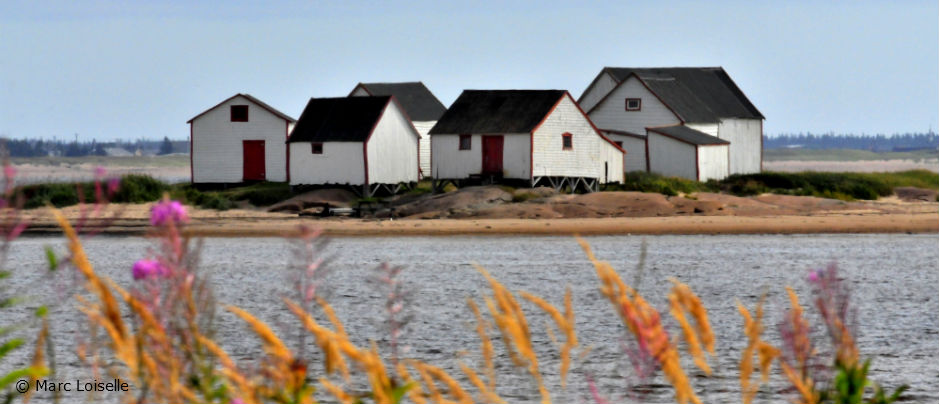
Côte-Nord is a vast land of contrasts covering nearly a quarter of Québec’s total surface area.
Other than a few explorers and missionaries who travelled through the region, it remained largely undeveloped in the New France era. Under British rule, small groups of Acadians, English, Irish, Scots, French Canadians and Jersey Islanders joined the Innu, who had long occupied the region. What drew them there? For some it was the hope of finding work or a self-sufficient way of life. For others it was a desire for freedom, a taste for adventure or the pursuit of business opportunities.
Madelinots, Gaspesians and people from the south shore of the St. Lawrence pioneered the region by establishing several villages in Côte-Nord.
When the writer Gabrielle Roy visited Côte-Nord in 1941, she wrote that the region had a bright future: “Côte-Nord has bread, fire and a simple joie de vivre for thousands of people who have yet to be born. This land does not belong to the cultures of today. It has been set aside for future conquerors.” [loose translation]
For a long time, fishing was the main occupation in Côte-Nord. Later, a regional economy emerged based on mining, forestry, hydroelectricity and fishing/hunting. The region’s vast open spaces, diverse scenery and abundant land and water resources have made it a prime tourist destination.
Visit: the Marine Mammal Interpretation Centre (CIMM) in Tadoussac, the Musée régional de la Côte-Nord (a regional museum) and the Old Trading Post in Sept-Îles as well as the Mingan Archipelago National Park Reserve interpretation centre in Havre-Saint-Pierre
Bas-Saint-Laurent
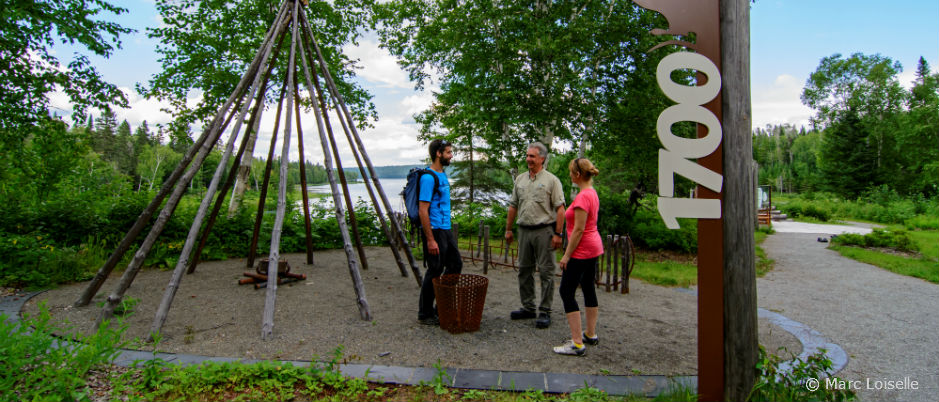
The Wolastoqiyik (Maliseet), a hunter-gatherer First Nations people who came to the St. Lawrence Estuary via the St. John River and portages in the Temiscouata area, were present in Bas-Saint-Laurent when the first Europeans arrived. Other First Nations—Haudenosaunee (Iroquois), Innu and Mi’gmaq—travelled to the south shore of the St. Lawrence on a seasonal basis. In the 19th century, only the Wolastoqiyik had settled permanently in Viger Township and at Cacouna.
During the French Regime, despite the presence of a few seigneuries, colonization did not progress because the seigneurs were focusing their efforts on the areas around Québec City and Montréal.
It was only in the 19th century, under the British, that the population in Bas-Saint-Laurent grew significantly. Forestry developed due to English demand for wood. Sawmills and shipyards were built. It took only 40 years, from 1790 to 1830, for the mostly French-speaking population to grow from 1250 to over 10,000. Many of these settlers came from other regions in Québec, including from other areas south of the St. Lawrence.
Road construction connecting outlying areas to the rest of the colony helped settlement from the coastline towards the interior ranges and the Temiscouata and Matapedia valleys. The land's farming potential grew in importance and fishing became secondary.
The Intercolonial Railway, built in the 1870s, had a significant impact on colonization. Three growth centres came into being: Rivière-du-Loup, Rimouski and Matane.
Traditional Québécois-style houses in Bas-Saint-Laurent attest to the influence of French architecture. The religious place names found everywhere in this homogeneous French-speaking region are a result of the omnipresence of Roman Catholic ideology.
Visit: the Maison Denis-Launière, the oldest dwelling in the Wolastoqiyik Wahsipekuk First Nation, which now houses an interpretation centre as well as handicraft boutique; the Putep ’t-awt observation site, which is accessible via a 2-km (1.2-mi.) discovery trail that will introduce you to the Wolastoqey culture; and Parc national du Lac-Témiscouata, which offers activities focuses on local Indigenous heritage
Choosing to settle in remote areas surrounding the Estuary and Gulf of St. Lawrence meant a huge change in the lives of the first settlers. However, the draw of open spaces and a fresh start under better circumstances impelled settlers in Gaspésie, the Îles de la Madeleine, Côte-Nord and Bas-Saint-Laurent to take up the challenge. Solidarity, a sense of community pride and joie de vivre are all attributes that continue to be very much in evidence in these regions today.
(0) comment